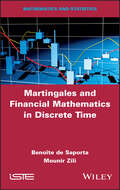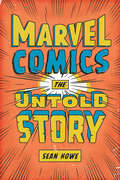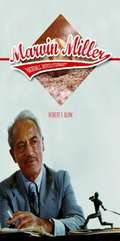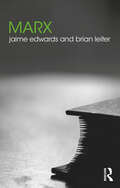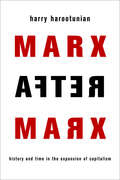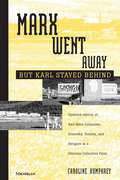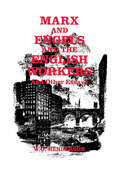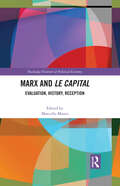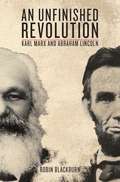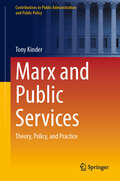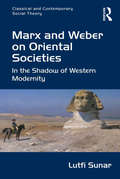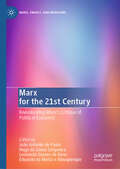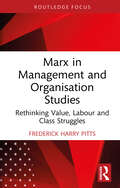- Table View
- List View
Martin Marietta: Managing Corporate Ethics (A)
by Lynn Sharp PaineSenior managers at Martin Marietta are considering two questions: how to assess the company's seven-year-old ethics program; and how to deal with employees' fear of retribution--real or imagined--for alerting the corporate ethics office to potential problems. The case describes the company's ethics program, the process of integrating it into the organization, and the reactions and views of key managers. Intended to provide in-depth knowledge of one company's approach to managing corporate ethics and to permit students to evaluate the impact of the program. Exposes students to a range of issues involved in managing programs like the one in place at Martin Marietta.
Martin Smith: January 2002
by Josh LernerAn MBA student must choose between offers from three private equity organizations. Each organization has distinct strengths and weaknesses, and different implications for the student's career development. The case presents compensation and employment data about the private equity industry. Teaching Note: Introduces the private equity industry and the key offerings between groups.
Martin Smith: May 2000
by Josh Lerner G. Felda HardymonA new associate at a venture capital firm must choose which of three potential investments to recommend to the firm's partners. Each potential investment has strengths and drawbacks.
Martin Smith: May 2002
by Josh Lerner G. Felda Hardymon Ann LeamonMartin Smith, a recent HBS graduate, has just begun working with a leveraged buyout firm. His first assignment is to evaluate three different deals and make recommendations to the partners. As he studies the deals, he realizes that each has different merits and drawbacks and that his recommendation must take into account not only the specifics of each target company but also the situation of his firm. Also, he must consider the stage of his career and that of the senior partner.
Martingale Asset Management LP in 2008, 130/30 Funds, and a Low-Volatility Strategy
by Luis M. Viceira Helen H. TungIn early July of 2008, William (Bill) Jacques, Chief Investment Officer at Martingale Asset Management, a quantitative value-oriented investment manager in Boston, Massachusetts, was busy preparing for an upcoming meeting with the group that made new product decisions within the firm. The objective of the meeting was to review the backtesting and real-time investment results of a new minimum-variance strategy within the framework of a 130/30 fund. The performance results were very encouraging, but Bill still wondered if they were a fluke of the data, a result of data mining rather than the reflection of a true market anomaly. He wanted to discuss several possible explanations of the phenomenon, and to decide whether Martingale should offer the strategy to its clients.
Martingales and Financial Mathematics in Discrete Time
by Benoîte de Saporta Mounir ZiliThis book is entirely devoted to discrete time and provides a detailed introduction to the construction of the rigorous mathematical tools required for the evaluation of options in financial markets. Both theoretical and practical aspects are explored through multiple examples and exercises, for which complete solutions are provided. Particular attention is paid to the Cox, Ross and Rubinstein model in discrete time.The book offers a combination of mathematical teaching and numerous exercises for wide appeal. It is a useful reference for students at the master’s or doctoral level who are specializing in applied mathematics or finance as well as teachers, researchers in the field of economics or actuarial science, or professionals working in the various financial sectors.Martingales and Financial Mathematics in Discrete Time is also for anyone who may be interested in a rigorous and accessible mathematical construction of the tools and concepts used in financial mathematics, or in the application of the martingale theory in finance
Martini Klinik: Prostate Cancer Care 2019
by Michael E. Porter Jens Deerberg-Wittram Thomas W FeeleySince its establishment in 2005, Hamburg's Martini Klinik had single-mindedly focused on prostate cancer care with a commitment to measure long term health outcomes for every patient. A wholly owned subsidiary of the University Hospital Hamburg, Martini Klinik was a "hospital in a hospital" in close proximity to other medical departments and services. By 2019, Martini Klinik had become the largest prostate cancer treatment program in the world with 8,000 outpatient cases and more than 2,500 surgical cases annually. Patients came from all over Germany and from around the world. A new and expanded facility was under construction to have the capacity to manage more patients with prostate cancer.
Marvel Comics: The Untold Story
by Sean HoweInterweaves history, anecdotes, and analysis with more than one hundred interviews with Marvel insiders to reveal how Marvel, which introduced brightly costumed caped crusaders in the 1960s, became one of the most dominant pop cultural forces in contemporary America.
Marvel Enterprises, Inc.
by Anita ElberseThe management team of Marvel Enterprises, known for its universe of superhero characters that includes Spider-Man, the Hulk, and X-Men, must reevaluate its marketing strategy. In June 2004, only six years after the company emerged from bankruptcy, Marvel has amassed a market value of more than $2 billion. Originally known as a comic book publisher, the company now also has highly profitable toy, motion picture, and consumer products licensing operations. However, doubts about Marvel's business model and its growth potential continue to exist. Had Marvel's winning streak been just a fluke? Was marvel's success dependent on a limited set of blockbuster characters, most notably Spider-Man, and should Marvel continue to capitalize on those characters? Or was it time to seek growth in a larger set of lesser known characters? In exploring growth opportunities, was it wise for Marvel to venture outside its current business model and move into more capital-intensive activities? What marketing strategy would allow Marvel to sustain its success in the coming years? Includes color exhibits.
Marvel Enterprises, Inc. (Abridged)
by Anita ElberseThe management team of Marvel Enterprises, known for its universe of superhero characters that includes Spider-Man, the Hulk, and X-Men, must reevaluate its marketing strategy. In June 2004, only six years after the company emerged from bankruptcy, Marvel has amassed a market value of more than $2 billion. Originally known as a comic book publisher, the company now also has highly profitable toy, motion picture, and consumer products licensing operations. However, doubts about Marvel's business model and its growth potential continue to exist. Had Marvel's winning streak been just a fluke? Was Marvel's success dependent on a limited set of blockbuster characters, most notably Spider-Man, and should Marvel continue to capitalize on those characters? Or was it time to seek growth in a larger set of lesser known characters? In exploring growth opportunities, was it wise for Marvel to venture outside its current business model and move into more capital-intensive activities? What marketing strategy would allow Marvel to sustain its success in the coming years?
Marvin Miller, Baseball Revolutionary (Sport and Society)
by Robert F BurkMarvin Miller changed major league baseball and the business of sports. Drawing on research and interviews with Miller and others, Marvin Miller, Baseball Revolutionary offers the first biography covering the pivotal labor leader's entire life and career. Baseball historian Robert F. Burk follows Miller's formative encounters with Depression-era hard times, racial and religious bigotry, and bare-knuckle Washington politics to a successful career in labor that prepared Miller for his biggest professional challenge--running the moribund Major League Baseball Players Association. Educating and uniting the players as a workforce, Miller embarked on a long campaign to win the concessions that defined his legacy: decent workplace conditions, a pension system, outside mediation of player grievances and salary disputes, a system of profit sharing, and the long-sought dismantling of the reserve clause that opened the door to free agency. Through it all, allies and adversaries alike praised Miller's hardnosed attitude, work ethic, and honesty. Comprehensive and illuminating, Marvin Miller, Baseball Revolutionary tells the inside story of a time of change in sports and labor relations, and of the contentious process that gave athletes in baseball and across the sporting world a powerful voice in their own games.
Marvin: A Personalized Telehealth Approach to Mental Health
by Regina E. HerzlingerMore than one third of Americans were said to suffer some type of behavioral health ailment at some point in their lifetime, with many people requiring chronic therapy or intervention. Despite significant clinical needs, access to reliable treatment has been difficult due to shortage of providers, stigma, and poor reimbursement. Marvin's primary offering was online teletherapy via video chat. They hoped to bring Marvin's solution to a wider audience and thought that the race belonged to the swift. As they considered the market opportunity and the complex landscape of digital mental health, they wondered what to do?
Marx (The Routledge Philosophers)
by Brian Leiter Jaime EdwardsThe writings of Karl Marx (1818–1883) have left an indelible mark not only on the understanding of economics and political thought but on the lives of millions of people who lived in regimes that claimed (wrongly) his influence. Trained as a philosopher and steeped in the thought of Hegel, Marx turned away from Hegelian philosophy after 1845 towards a philosophy that incorporated economics and history. It is this Marx that endures and to which this outstanding introduction is devoted.Jaime Edwards and Brian Leiter begin with an overview of Marx's life and intellectual development, including his early years as a journalist in Germany before his exile in London. They then introduce and assess the fundamental elements of Marx’s thought: Marx’s theory of history and historical change (historical materialism) class conflict, the state, and the Communist revolution Marx’s theory of economics, especially the labour theory of value, and his prediction of the collapse of capitalism the nature and role of ideology in Marx’s thought Marx’s theory of human nature and the good life, including his arguments concerning alienation Marx’s legacy and influence, including Western Marxism, the Frankfurt School, and “feminist Marxism”. Including annotated further reading suggestions at the end of each chapter and a glossary of technical terms, this is an indispensable introduction to Marx's philosophical thought. It will also be extremely useful to those in related disciplines such as politics, sociology, history, and political economy.
Marx After Marx: History and Time in the Expansion of Capitalism
by Harry HarootunianIn Marx After Marx, Harry Harootunian questions the claims of Western Marxism and its presumption of the final completion of capitalism. If this shift in Marxism reflected the recognition that the expected revolutions were not forthcoming in the years before World War II, its Cold War afterlife helped to both unify the West in its struggle with the Soviet Union and bolster the belief that capitalism remained dominant in the contest over progress. This book deprovincializes Marx and the West's cultural turn by returning to the theorist's earlier explanations of capital's origins and development, which followed a trajectory beyond Euro-America to Asia, Africa, and Latin America. Marx's expansive view shows how local circumstances, time, and culture intervened to reshape capital's system of production in these regions. His outline of a diversified global capitalism was much more robust than was his sketch of the English experience in Capital and helps explain the disparate routes that evolved during the twentieth century. Engaging with the texts of Lenin, Luxemburg, Gramsci, and other pivotal theorists, Harootunian strips contemporary Marxism of its cultural preoccupation by reasserting the deep relevance of history.
Marx Went Away - But Karl Stayed Behind: Economy, Society and Religion in a Siberian Collective Farm
by Caroline HumphreyWhen it appeared in 1983, Caroline Humphrey's Karl Marx Collective was the first detailed study of the Soviet collective farm system. Through careful ethnographic work on two collective farms operated in Buryat communities in Siberia, the author presented an absorbing--if dispiriting--account of the actual functioning of a planned economy at the local level. Now this classic work is back in print in a revised edition that adds new material from the author's most recent research in the former Soviet Union. In two new chapters she documents what has happened to the two farms in the collapsing Russian economy. She finds that collective farms are still the dominant agricultural forms, not out of nostalgic sentiment or loyalty to the Soviet ideal, but from economic and political necessity. Today the collectives are based on households and small groups coming together out of choice. There have been important resurgences in "traditional" thinking about kinship, genealogy, shamanism and mountain cults; and yet all of this is newly formed by its attempt to deal with post-Soviet realities.
Marx and Engels and the English Workers: And Other Essays
by W. O. HendersonPublished in the year 1989, Marx and Engels and the English Workers is a valuable contribution to the field of Economics.
Marx and Le Capital: Evaluation, History, Reception (Routledge Frontiers of Political Economy)
by Marcello MustoOver the past few years, Marx’s Capital has received renewed academic and popular attention. This volume is dedicated to the history of the making, the theoretical evaluation, and the analysis of the dissemination and reception of an almost unknown version of Capital: the French translation, published between 1872 and 1875, to which Marx participated directly. In revising this version, Marx decided to introduce some additions and modifications, not hesitating to describe in the postscript Le Capital as ‘a scientific value independent of the original’. To mark the 150th anniversary of the French translation of Capital (1872-2022), 15 authors have helped to shed light on its history and main features, as well as analysing its later fortunes in France and in the rest of the world. They also provide a more exhaustive account of the ideas of the "late" Marx. The book also includes a previously unpublished selection of 31 letters from correspondence of Karl Marx, Maurice Lachâtre, Just Vernouillet and Friedrich Engels related to the making of Le Capital. 10 of these letters by Marx were only recently rediscovered and are translated here for the first time in English. This book is an indispensable source for academic communities who are increasingly interested in rediscovering Marx beyond 20th century Marxism. Moreover, it will be of appeal to graduate students, as well as established scholars, interested in French socialism and the history of the labour movement.
Marx and Lincoln: An Unfinished Revolution
by Abraham Lincoln Karl Marx Robin BlackburnKarl Marx and Abraham Lincoln exchanged letters at the end of the Civil War. Although they were divided by far more than the Atlantic Ocean, they agreed on the cause of free labor and the urgent need to end slavery. In his introduction, Robin Blackburn argues that Lincoln's response signaled the importance of the German American community and the role of the international communists in opposing European recognition of the Confederacy. The ideals of communism, voiced through the International Working Men's Association, attracted many thousands of supporters throughout the US, and helped spread the demand for an eight-hour day. Blackburn shows how the IWA in America--born out of the Civil War--sought to radicalize Lincoln's unfinished revolution and to advance the rights of labor, uniting black and white, men and women, native and foreign-born. The International contributed to a profound critique of the capitalist robber barons who enriched themselves during and after the war, and it inspired an extraordinary series of strikes and class struggles in the postwar decades. In addition to a range of key texts and letters by both Lincoln and Marx, this book includes articles from the radical New York-based journal Woodhull and Claflin's Weekly, an extract from Thomas Fortune's classic work on racism Black and White, Frederick Engels on the progress of US labor in the 1880s, and Lucy Parson's speech at the founding of the Industrial Workers of the World.
Marx and Living Labour: Marx And Living Labour (Routledge Frontiers of Political Economy)
by Laurent BaronianFrom his early economic works on, Marx conceived the labour of any kind of society as a set of production activities and analysed the historical modes of production as specific ways of distributing and exchanging these activities. Political economy on the contrary considers the labour only under the form of its product, and the exchange of products as commodities as the unique form of social labour exchange. For Marx, insofar as the labour creating value represents a specific mode of exchanging the society's living labour, general and abstract labour cannot not only be defined as the substance or measure unit of the commodity, as in Smith or Ricardo, but foremost as an expense of living labour, i.e. of nerves, muscles, brain, etc. Hence the twofold nature of living labour, as a concrete activity producing a use value and an expense of human labour in general producing exchange value. Marx himself claimed that this twofold nature of labour creating value was its main and most important contribution to economic science. This book aims at showing how both determines the original categories and economic laws in Capital and constitutes the profound innerspring of Marx's critique of political economy. The role and function of living labour is highlighted by dealing with the difference between Marx and Classics' theories of labour value; money and the problems of its integration in economic analysis, especially in Keynes; the transition from feudalism to capitalism; the theory of capital through a discussion on the Cambridge controversy and the transformation problem; the labour process and the principles of labour management; unemployment and overpopulation; the formulas of capital in the history of economic thought; finally, an interpretation of the current crisis based on Marx's conception of overaccumulation and speculation after having distinguished it from underconsumption and stagnation theories of crises.
Marx and Public Services: Theory, Policy, and Practice (Contributions to Public Administration and Public Policy)
by Tony KinderBy evaluating previous public management research through Marxist concepts, this textbook offers innovative solutions to public service problems. It updates Marx’s framework to reflect the growth of public services, transitioning from abstract state notions to concrete service analysis. Addressing two critical gaps, the book highlights the benefits of a Marxist approach to public services and presents Marxist ideas to examine these services at a micro level. It demonstrates the relevance of Marxist frameworks for public service professionals, critically reviews current public management knowledge, and sheds light on the dynamic nature of public services against the background of neoliberalism. While doing so, the book goes beyond a Eurocentric perspective, providing cases and practical examples from developed and developing countries, with an additional focus on Asian practices. Written by an award-winning author with years of practical experience and designed for graduate and advanced undergraduate students, each chapter sets clear learning objectives and reviews existing tools and frameworks. The chapters also present new ways of improving public services, encouraging readers to apply Marxist concepts to their contexts and cultures. This will also make this book a practical resource for practitioners and professionals, seeking to resolve their grounded public services issues.
Marx and Weber on Oriental Societies: In the Shadow of Western Modernity (Classical and Contemporary Social Theory)
by Lutfi SunarThe Orient was central to the work of Marx and Weber, both figures building their theories around the question of why modernity appeared to emerge only in the West. While Marx’s account focused on the accumulation of capital in the West, Weber’s explanation for this phenomenon centred on Western rationalization. Extending recent work comparing the social theories of Marx and Weber, this book examines their approaches to Oriental societies, showing how, in spite of the differences in their respective theorizations of the historical and political development of the West, their work on the form of modern society in the Orient converges, each complementing the other. Fully conversant with recent scholarly work on Marx and Weber, this comprehensive re-examination of the points of convergence and departure in their work requires us to re-evaluate both their positions in the history of sociology and their relevance to contemporary social questions. As such, it will appeal to scholars of social and political theory and classical sociology.
Marx for the 21st Century (Routledge Frontiers of Political Economy #Vol. 73)
by Hiroshi UchidaThis groundbreaking collection surveys current research on Marx and Marxism from a variety of perspectives. Setting forward an unconventional range of questions for discussion, the book develops key ideas, such as the theory of history, controversies about justice and the latest textual scholarship on The German Ideology. Written by Japanese scholars, the volume affords western readers a glimpse for the first time, of the results of many years’ debates and discussion. Following the long tradition of Japanese interest in Marx, the book draws on the relationship between that and radical changes in local political context, as well as the economic and political development represented by Japan. Over the course of the chapters, Marx is rescued from ‘orientalism’, evaluated as a socialist thinker, revisited as a theorist of capitalist development and heralded as a necessary corrective to modern economics. Of particular interest are the major scholarly revisions to the ‘standard’ historical accounts of Marx’s work on the Communist Manifesto, his relationship to the contemporary theories of Louis Blanc and P.J. Proudhon, and new information about how he and Engels worked together. This landmark work opens up a world of Japanese critical engagement and lively scholarship that will appeal to anyone interested in Marx and Marxism.
Marx for the 21st Century: Reevaluating Marx's Critique of Political Economy (Marx, Engels, and Marxisms)
by João Antonio de Paula Hugo da Gama Cerqueira Leonardo Gomes de Deus Eduardo da Motta e AlbuquerqueThis book offers a critical assessment of some of the most contentious topics in the Marxian critique of political economy in the light of the recent publications of the complete manuscripts and editions of Capital in MEGA. Covering issues like the incompleteness of Marx&’s critique of political economy, the long-term trajectories of capitalism, the problem of economic crisis, and the center-periphery dynamics within global capitalism, this book offers an original intervention into the current debates of the Marxist tradition precisely at a crucial moment for the research of Marx&’s critique of the capitalist economy, and recovers the true critical, dialectical and open character of Marx&’s social theory.
Marx in Management and Organisation Studies: Rethinking Value, Labour and Class Struggles (Routledge Focus on Business and Management)
by Frederick Harry PittsThis book introduces new approaches that deploy concepts from Marx’s critique of political economy to renew the study of labour, value and social antagonisms in the broad area of management and organisation studies. Exploring established and emergent strands of Marxian theorising inside and outside management and organisation studies, it delves into, beyond and behind the ‘hidden abode’ of production to examine a range of issues including: the relationship between the workplace and the market; the relationship between conflicts at work and wider social and political movements; the role of class, gender and race in capitalist society; and the interconnection of work and labour with the environmental crisis. The book will be of interest for academics, postgraduate students and researchers interested in radical perspectives on work, organisation and economic life. Representing both a critical introduction to existing theories and a theoretical contribution to the development of the field of study in its own right, it condenses challenging ideas into a short, readable volume without losing their complexity or sophistication.

